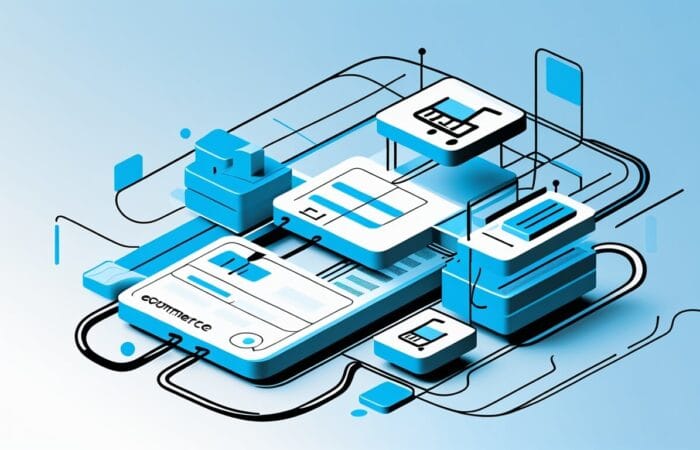Introduction
Before delving into the particulars of how each service model benefits IoT projects, it is crucial to understand what SaaS, PaaS, and IaaS involve. Each of these models offers distinct levels of control, flexibility, and responsibility, influencing how businesses manage their IoT ecosystems.
Software as a Service (SaaS)
SaaS offers ready-to-use applications over the internet, eliminating the need for businesses to manage the underlying infrastructure. This model is particularly beneficial for IoT projects as it provides applications for device management, data analytics, and user interfaces without the need for underlying infrastructure management. By leveraging SaaS, companies can focus on the application and business logic rather than the technical complexities of infrastructure.
This model is ideal for businesses seeking to deploy IoT solutions rapidly with minimal IT involvement, offering cost savings and reduced time-to-market.
Furthermore, SaaS providers often offer regular updates and maintenance, ensuring that the applications remain up-to-date with the latest features and security protocols. This continuous improvement cycle allows businesses to stay competitive and innovate without significant upfront investments in IT resources. As a result, SaaS can democratise access to advanced IoT capabilities, allowing even small enterprises to harness the power of IoT without extensive technical expertise.
Platform as a Service (PaaS)
PaaS provides a platform allowing developers to build, deploy, and manage applications without dealing with the complexities of infrastructure. In the context of IoT, PaaS offers a robust environment for developing IoT applications, integrating various devices, and managing data streams.
The primary advantage here is the capability to concentrate on the application logic instead of infrastructure hurdles. PaaS platforms often come kitted out with tools and services that support the rapid development and deployment of IoT applications, enabling businesses to innovate and adapt to market changes swiftly.
Moreover, PaaS allows for seamless integration with other services and systems, providing a cohesive environment for IoT development. This model champions the use of diverse programming languages and frameworks, offering developers the flexibility to use the tools they find most comfortable. By simplifying the complexities of infrastructure management, PaaS empowers developers to focus on building high-quality applications that can scale efficiently as the business expands.
Infrastructure as a Service (IaaS)
IaaS delivers virtualised computing resources over the internet, offering maximum flexibility and control for IoT projects that require comprehensive customisation.
For IoT projects that necessitate extensive customisation, control, and scalability, IaaS is an appealing option. It provides the adaptability to configure and manage physical servers, storage, and networking resources, tailoring the environment to specific IoT needs. Businesses that opt for IaaS can design their infrastructure to meet precise specifications, ensuring optimal performance and reliability for their IoT deployments.
Furthermore, IaaS allows businesses to scale their infrastructure dynamically in response to changing demands. This scalability is crucial for IoT projects that encounter variable workloads or necessitate rapid expansion. Whilst IaaS requires more skilled IT resources to manage, it offers unparalleled customisation and control, making it suitable for organisations with complex and demanding IoT requirements.
Key Differences and Benefits for IoT Projects
Deployment Speed and Cost Efficiency
SaaS solutions offer unparalleled speed in deployment due to their ready-to-use nature. Businesses can quickly implement IoT solutions without the need for extensive IT resources, making SaaS cost-effective, especially for small to medium-sized enterprises. The elimination of infrastructure setup and maintenance allows companies to redirect resources towards innovation and strategic initiatives. PaaS provides a balance, offering development flexibility whilst managing much of the infrastructure, thus reducing operational costs. This model is particularly advantageous for development teams that require a robust environment to build and test applications without the overhead of managing hardware.
IaaS, whilst more costly due to the need for skilled IT resources, offers unmatched customisation and control.
It allows businesses to configure their infrastructure to meet specific project requirements, ensuring optimal performance and reliability. While the initial investment may be higher, the long-term benefits of a tailored infrastructure can lead to significant cost savings and improved efficiency. This model is well-suited for organisations with complex IoT needs that demand precise infrastructure configurations.
Scalability and Flexibility
IoT projects often demand scalability to accommodate growing numbers of devices and data volume. PaaS platforms excel in this aspect by offering scalable environments that can adjust to the fluctuating needs of IoT applications. This flexibility enables businesses to expand their IoT deployments without worrying about capacity constraints. PaaS providers often offer automated scaling features that adjust resources based on demand, ensuring optimal performance at all times.
IaaS provides the highest degree of flexibility and control, allowing for tailored infrastructure scaling. Businesses can add or remove resources as needed, ensuring that their infrastructure aligns with current and future demands. In contrast, SaaS solutions, although scalable, might not offer the same level of customisation. SaaS’s scalability is often limited to the capabilities of the provider’s infrastructure, which may not meet the unique demands of every IoT project.
Security and Compliance
Security is paramount in IoT deployments due to the sensitivity of data collected and processed. SaaS providers typically offer robust security measures, but they may not meet specific compliance needs. The shared responsibility model means that whilst the provider ensures the security of the infrastructure, businesses must manage application-level security. PaaS offers a middle ground, providing security features whilst allowing developers to implement additional measures.
This model enables businesses to customise security protocols to meet specific compliance requirements.
IaaS offers the most control over security protocols, making it suitable for projects requiring stringent compliance. Businesses can implement their own security measures, ensuring that all aspects of the infrastructure meet their specific standards. This control is essential for organisations operating in regulated industries where compliance with industry standards and regulations is compulsory.
Integration and Interoperability
IoT ecosystems often consist of diverse devices and technologies, necessitating seamless integration. PaaS platforms are particularly adept at handling integration challenges, providing middleware and APIs to ensure interoperability across various devices and systems. This capability allows businesses to create cohesive IoT ecosystems that can communicate effectively and share data in real-time.
PaaS also supports integration with third-party services, enhancing the functionality of IoT applications.
SaaS solutions, whilst simpler to implement, may face limitations in integrating with existing systems. The predefined nature of SaaS applications can restrict customisation and integration options, potentially leading to compatibility issues with legacy systems. IaaS, by offering full control, allows for bespoke integration solutions but requires more technical expertise. Businesses can design their integration strategies to meet specific needs, ensuring seamless communication between all components of their IoT infrastructure.
Future Outlook: IoT and Cloud Services in 2025
As we advance towards 2025, the convergence of IoT and cloud services will continue to shape industry landscapes. The choice of service model will increasingly depend on specific project requirements, industry regulations, and technological advancements.
Businesses will need to stay informed about emerging trends and technological innovations to make strategic decisions that align with their long-term goals.
Emerging Trends
- Edge Computing Integration: IoT projects will increasingly leverage edge computing in conjunction with cloud services to process data closer to the source, reducing latency and enhancing real-time decision-making. This trend will be driven by the need for quicker response times and the ability to process large volumes of data efficiently. By integrating edge computing, businesses can enhance the performance of their IoT applications and improve user experiences.
- AI and Machine Learning: Integration with AI and machine learning will become standard, with PaaS platforms offering tools to harness these technologies for predictive analytics and automation in IoT ecosystems.
These technologies will enable businesses to derive valuable insights from IoT data, optimise operations, and create intelligent applications that adapt to changing conditions. The combination of IoT and AI will drive innovation and enable new business models across industries. 3. Enhanced Security Protocols: With growing cyber threats, cloud service providers will enhance security protocols, particularly in SaaS and PaaS offerings, to safeguard IoT infrastructures. As IoT devices become more prevalent, ensuring the security of data and devices will be paramount. Providers will invest in advanced security measures, including encryption, authentication, and anomaly detection, to protect IoT deployments from potential threats.
Strategic Considerations
For businesses embarking on IoT projects, strategic considerations will include evaluating the total cost of ownership, assessing the technical expertise available, and aligning cloud service choices with long-term business goals.
The decision between SaaS, PaaS, and IaaS will not be one-size-fits-all but rather tailored to the unique demands of each project. Companies will need to consider factors such as scalability, security, integration capabilities, and budget constraints to make informed decisions.
Furthermore, organisations must remain nimble and adaptable to technological advancements, ensuring that their IoT strategies evolve with changing market dynamics. By staying ahead of emerging trends and harnessing the right cloud service models, businesses can position themselves for success in an increasingly connected world.
Conclusion
The decision between SaaS, PaaS, and IaaS for IoT projects in 2025 will hinge on a thorough understanding of each model’s benefits and limitations. By aligning project needs with the right cloud service, businesses can leverage IoT technologies to drive innovation, efficiency, and growth.
As IoT continues to expand, the strategic use of cloud services will be instrumental in achieving superior project outcomes and maintaining a competitive advantage in an increasingly connected world.
In conclusion, the interplay between IoT and cloud services will shape the future of business operations, enabling companies to harness the power of connected devices and data-driven insights. By making informed decisions about cloud service models, organisations can unlock new opportunities, enhance customer experiences, and achieve their strategic objectives. As we look towards 2025 and beyond, the successful integration of IoT and cloud technologies will be a key differentiator for businesses seeking to thrive in a digital-first landscape.









